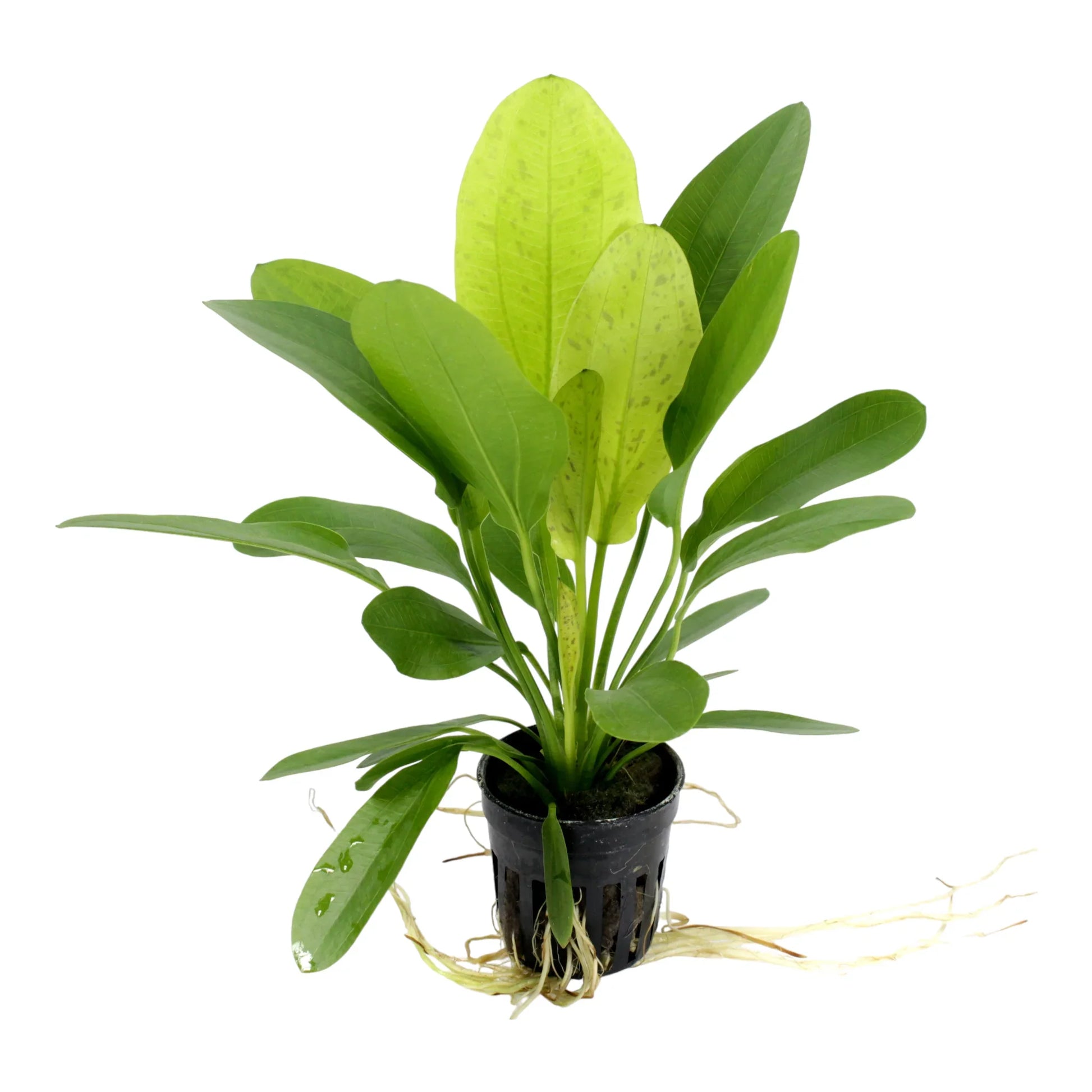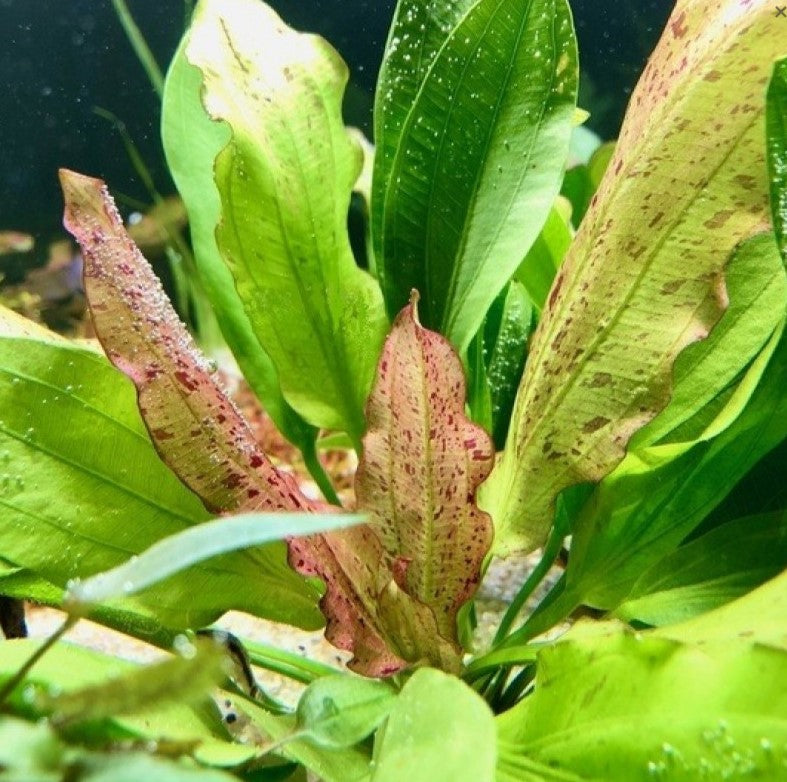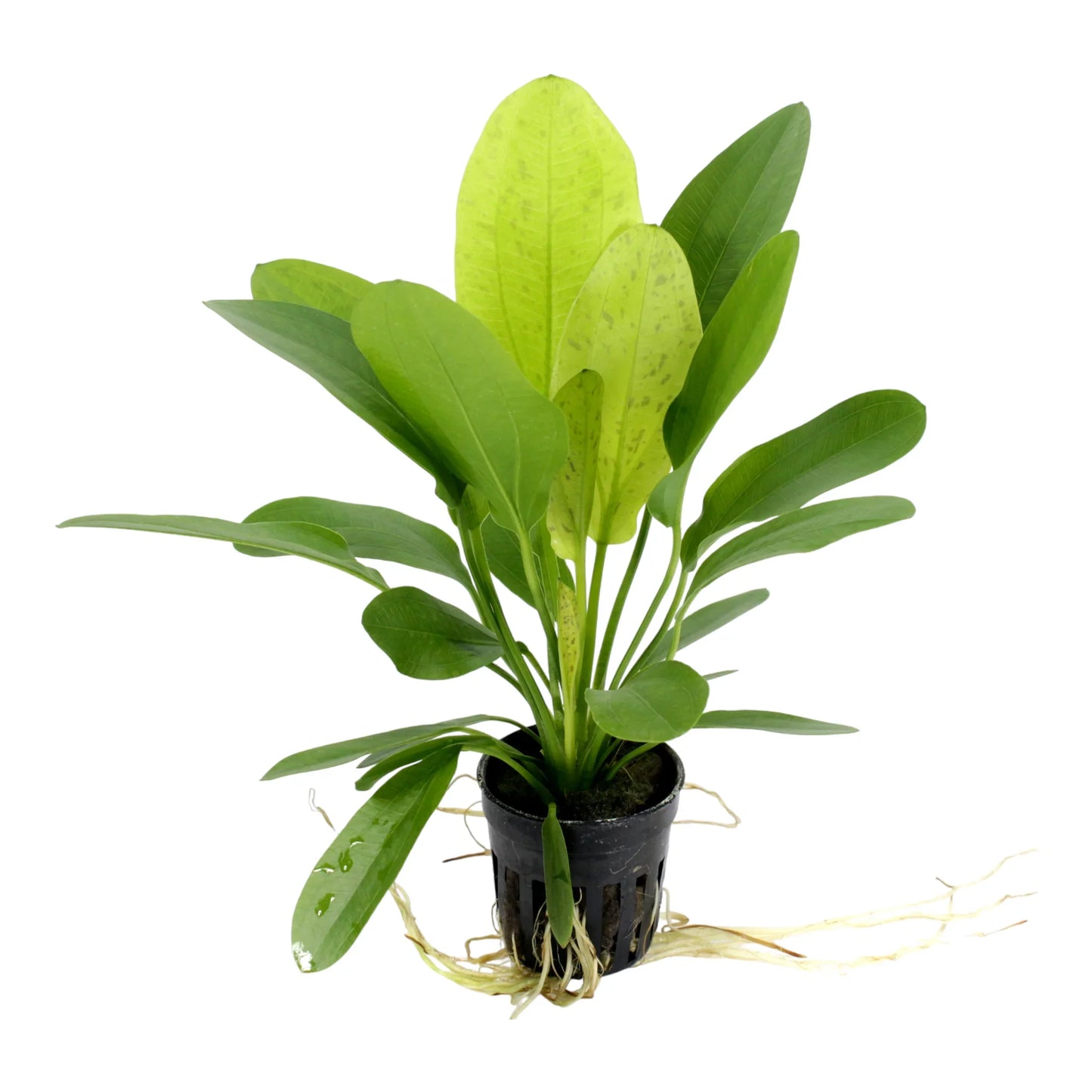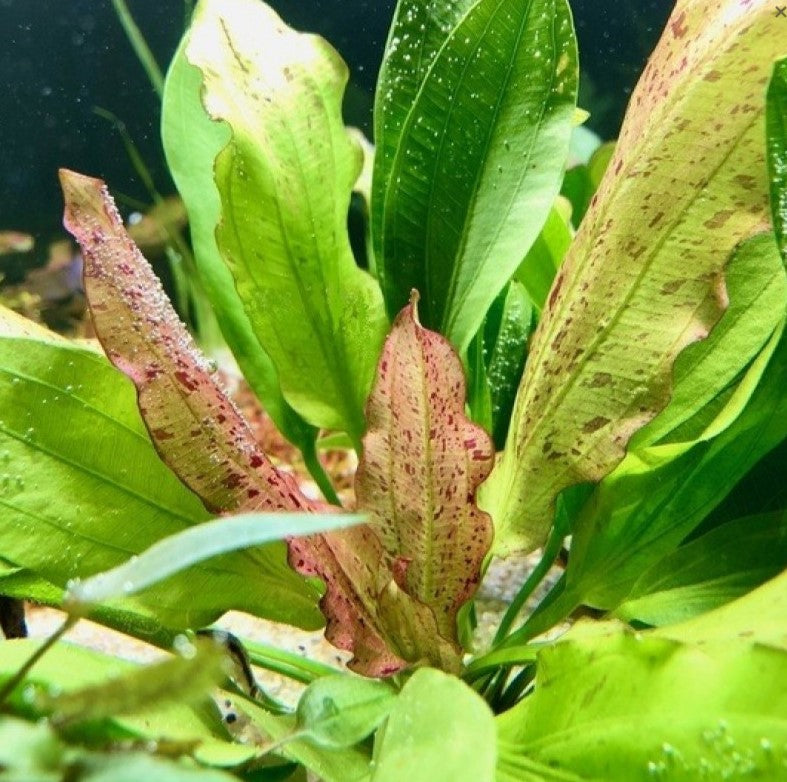🌿 Echinodorus Jaguar - Exotic Freshwater Aquarium Plant
Make a bold statement in your aquarium with the rare and exotic Echinodorus Jaguar. Known for its striking speckled leaves with dark spots resembling jaguar patterns, this plant adds a unique and wild touch to any aquascape. Hardy and easy to care for, it is a fantastic choice for beginners and advanced aquarists.
Echinodorus Jaguar Quick Facts
| Feature | Details |
|---|---|
| 🌍 Origin | South America |
| 📏 Size | 10 - 20 inches |
| 💡 Lighting | Moderate to high |
| 🌡️ Temperature | 72°F - 82°F (22°C - 28°C) |
| 💧 pH Range | 6.5 - 7.5 |
| 🎨 Color | Speckled green and dark brown spotted leaves |
| 🪴 Position in Tank | Midground to Background |
| 🌟 Difficulty | Beginner-friendly (easy to moderate) |
| 🐟 Compatibility | Betta fish, Neocaridina/Caridina shrimp, snails, community fish |
Why Choose Echinodorus Jaguar?
- ✔️ Unique speckled foliage – A one-of-a-kind plant that stands out in any aquarium.
- ✔️ Great for oxygenation – Helps maintain water quality by absorbing excess nutrients.
- ✔️ Provides natural cover – Ideal for fish and shrimp seeking shelter.
- ✔️ Hardy and adaptable – Thrives in a variety of freshwater setups.
How to Care for Echinodorus Jaguar
Care Tips
- Lighting: Moderate to high lighting enhances leaf coloration and pattern intensity.
- Placement: Works best as a midground or background plant due to its broad leaves.
- Substrate: Prefers nutrient-rich substrate; root tabs can promote vigorous growth.
- Fertilizer: Regular root fertilization and occasional liquid fertilizer improve leaf vibrancy.
- Maintenance: Trim older or damaged leaves at the base to encourage fresh growth.
Propagation Steps
- Wait for Runners: Mature plants will produce side shoots or runners.
- Separate the Baby Plants: Once plantlets have established roots, carefully remove them from the parent plant.
- Replant: Place the new plantlets into the substrate and allow them to grow.



